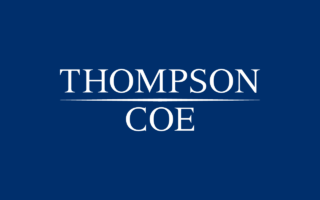Collision with Stationary Truck Arises From Use of Auto
May 16, 2005
In Employers Mutual Casualty Company v. St. Paul Insurance Company, 2005 WL 225260 (Tex.App. – Dallas, Feb. 1, 2005), the Dallas Court of Appeals held that the auto exclusion in a CGL policy precluded coverage for damages arising out of a collision involving a truck being used as a crash barrier and warning sign. Hanna Construction, Inc. (“Hanna”) was insured by Employers Mutual Casualty Company (“EMC”). Hanna subcontracted some road striping work to Striping Technologies, Inc. (“STI”), which was insured by St. Paul under both an auto policy and a CGL policy. Hanna was an additional insured under STI’s CGL policy with St. Paul. An STI road-work convoy was performing striping work. The convoy consisted of the trucks that were performing the road marking and two supply/crash trucks. The crash truck at the rear of the convoy had a flat bed on the back with a cargo grate around it, an arrow board on the back, and a crash barrier. At the time of the accident, the driver of this truck had stopped and taken it out of gear before the crest of a hill while he waited on the road-marking trucks to start climbing the next hill. A vehicle collided with the parked crash truck, killing the driver, Gary Hudman, and one of his passengers. The other passenger was seriously injured. The Hudmans sued STI and Hanna for negligence.
STI settled with the Hudmans for the liability limits of its St. Paul auto policy. Hanna settled with the Hudmans for a sum paid from its EMC CGL policy. EMC then brought suit against St. Paul as subrogee of Hanna’s right to reimbursement as an additional insured under the St. Paul CGL policy issued to STI. EMC brought an action against St. Paul to get reimbursement of a portion of the amount it paid to settle the Hudman lawsuit on behalf of Hanna. The trial court granted summary judgment for St. Paul, holding that the St. Paul CGL policy’s auto exclusion precluded coverage. EMC appealed.
The Dallas Court of Appeals began its analysis by rejecting EMC’s argument that the exclusion was inapplicable because the accident did not arise from the use of the crash truck as an auto. Essentially, EMC argued that the accident was caused by the use of the crash truck as a stationary steel barricade, and by STI’s failure to use appropriate warning systems to guide traffic around the work zone. The court of appeals disagreed, stating that the truck was being used to transport the driver, the crash barrier, and the flashing arrow sign when the Hudmans drove into it. The fact that the vehicle was stationary at the time was not determinative of whether it was being used or operated as an auto. The court concluded that the evidence established the accident was caused by the crash truck as an auto, noting that the truck’s presence on the roadway and the decision to stop the truck in traffic resulted in the accident. In other words, the court rejected EMC’s argument that non-vehicular negligence was an independent “but for” cause of the injury. The court concluded that any non-vehicular negligence was not an independent cause. Rather, but for the use or operation of the truck as an auto, there would have been no accident. Finally, the court rejected EMC’s argument that the crash truck was “specialized equipment” or some form of “mobile equipment” because it failed to meet the policy’s definitions of those terms with regard to its use, operation, and role in the accident. The trial court’s grant of summary judgment to St. Paul was affirmed.







